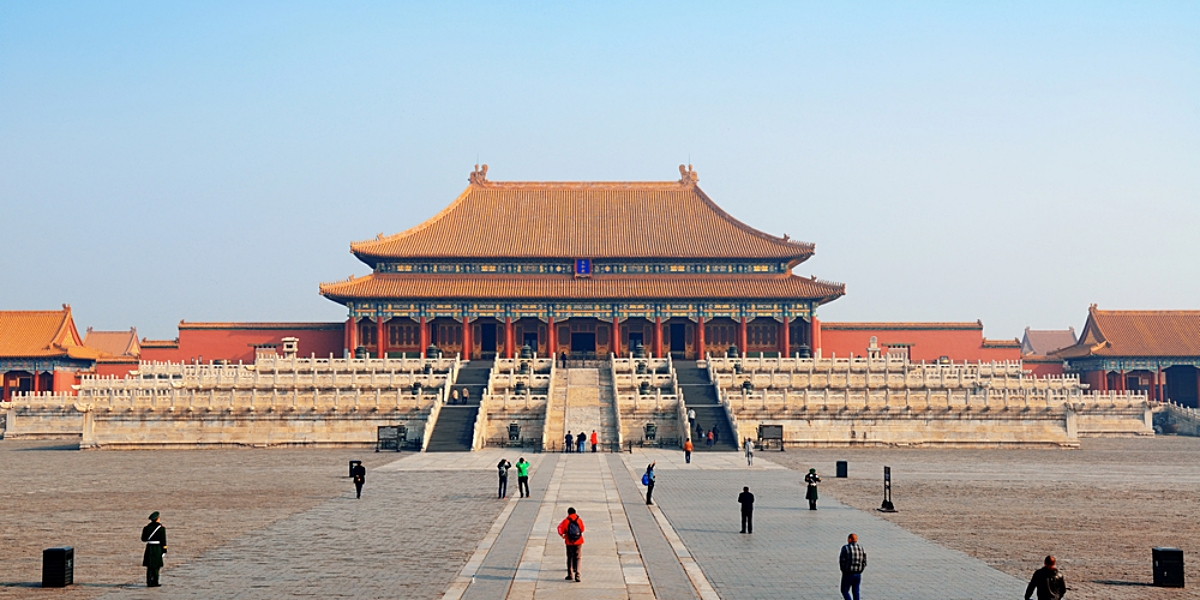Characteristics of a Manly Guy That Makes Women Fall in Love
Discover the characteristics of a manly guy that make him the ideal choice for many women and how his demeanor can attract attention.

Kapanlagi.com - The Forbidden City, or in Mandarin known as 'Zijincheng', is a magnificent palace complex located in the heart of Beijing. This place is known as the Forbidden City due to its extremely limited access, which was prohibited for the general public for centuries. Only the emperor, his close family, and a select number of palace officials were permitted to enter this area. Since its construction in 1420, this complex has become a symbol of imperial power in China.
For more than 500 years, the Forbidden City served as the center of government and the residence of the emperor. This restriction of access was not merely a rule, but also a firm statement of power. Commoners who dared to attempt to enter this area without permission could face severe penalties, including the death penalty. This created a mysterious aura around the complex, making it a place separate from the daily lives of the people.
The history of the Forbidden City began during the Ming Dynasty, when Emperor Yongle ordered the construction of this palace. With over 980 buildings and an area of 180 hectares, this complex is home to 24 emperors from the Ming and Qing Dynasties. The elegance of the architecture and the magnificent design reflect immense wealth and high social status. However, behind this luxury, there are strict prohibitions that make it a 'forbidden city' for many people.
The construction of the Forbidden City began in 1406 and was completed in 1420. For over 500 years, this complex has been a symbol of power and luxury. With its magnificent architecture, the Forbidden City reflects the beauty and strength of the Ming and Qing Dynasties.
During the imperial era, access to the Forbidden City was highly restricted. Only certain individuals were allowed to enter, such as the emperor, family members, and high officials. Common people attempting to enter the area without permission would face severe consequences.
The term 'Forbidden City' emphasizes the status and power of the emperor. This access restriction indicates that the emperor is the supreme ruler who cannot be disturbed by his subjects. Thus, this complex becomes a symbol of unmatched power.
After the expulsion of the last emperor in 1924, the Forbidden City began to open to the public. Now, this complex has become a museum that attracts many visitors from around the world. People can see and learn about the rich history and culture of China.
The Forbidden City has more than 980 buildings built with traditional Chinese architecture. Its magnificent design and intricate details reflect the wealth and sophistication of that era. Visitors can feel the historical atmosphere while exploring every corner of this complex.
The Forbidden City is not just a building, but also an important part of Chinese history. This complex has been a silent witness to the long journey of Chinese culture and politics. Many important events in Chinese history took place within its walls.
Now, the Forbidden City is one of the most popular tourist destinations in China. Every year, millions of visitors come to witness the beauty and uniqueness of this complex. Inside, they can find various historical artifacts and gain a deeper understanding of Chinese culture.
The Forbidden City is a true example of how power and prohibition can shape history. From a place that was isolated and forbidden, it has now become a symbol of openness and education. With all its beauty and history, the Forbidden City remains one of the invaluable cultural heritages of the world.
(kpl/tmi)
Cobain For You Page (FYP) Yang kamu suka ada di sini,
lihat isinya
Discover the characteristics of a manly guy that make him the ideal choice for many women and how his demeanor can attract attention.
Discover the long journey of hair curling tools from ancient times to modern advanced technology.
Delving into the meaning behind favorite colors and their influence on each person's personality.
Discover several tourist attractions in Jakarta that combine entertainment and education for an unforgettable holiday experience.
From The Devil Wears Prada to Cruella, here’s a list of Hollywood fashion-themed movies that are not only stylish but also have exciting stories. Check out the recommendations here!
There are many Indonesian thriller films that have successfully caught attention, both domestically and internationally.
There are several other animated films made in Indonesia that have been screened in theaters over the past few decades and have captured the public's attention.
It turns out there are reasons why farts can smell so bad, and it relates to what you eat and how your body digests that food.
Farting while sleeping may sound silly, but did you know that it is a very normal thing?
Yes, starting from Cancer, which is known for being emotional, to Pisces, who loves reminiscing about the past, each zodiac has a unique way of feeling and expressing emotions.
Recommendations for chill and mellow songs from international musicians to accompany your journey back from your Eid homecoming, ensuring it remains comfortable and enjoyable.
For beginners who want to dive into the world of gold investment, it is important to understand some basic things to ensure the investment runs smoothly and profitably.